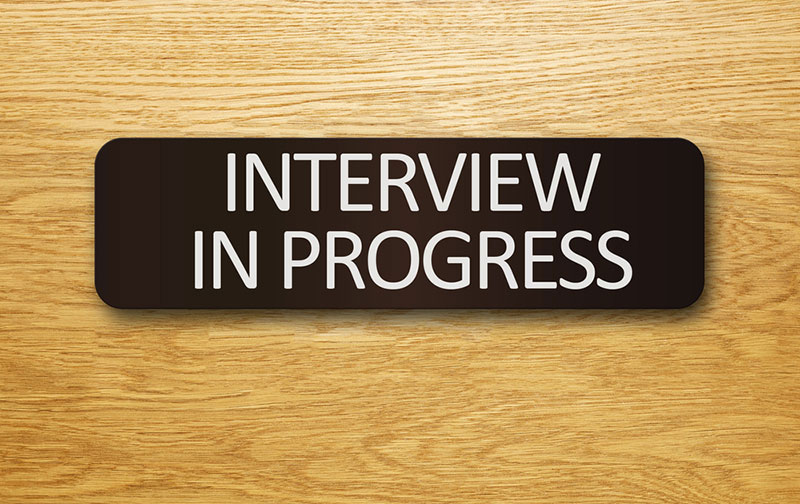Tuesday, March 22, 2016
by julie

Image, body language and expressions are key messaging events during an interview on both the applicant and hiring authority side. The interview starts while you are waiting for the hiring authority. Receptionists are often asked about their observations. Be professional and exhibit a profile that portrays confidence and calmness.
First impressions are made within 3 minutes of the initial greeting. Three assessments happen quickly. You are measured on attire, posture and hand shake. Making a great entrance and first impression sets the stage. Body language is judged from head to toe. Attire should be conservative; cologne, perfume, jewelry and make-up should be minimized or nonexistent; hair must be well groomed; and shoes polished and stylish.
Whether sitting or standing, your posture projects a level of confidence and engagement in the conversation. If you slump, the interviewer will perceive a lack of confidence and interest. Sitting stiff as a rock implies nervousness and creates an uncomfortable situation for building rapport. Crossing your arms and legs may be interpreted as building a barrier. Sitting at the tip of the chair implies you don’t want to be there. Best sitting posture is straight and displaying your neck, chest and stomach area, a signal that you're open; leaning slightly forward at about a 10% angle sends the silent message that you are interested and involved; and adjusting at a slight angle and using arm movement is best way to emphasize talking points and show interest.
A handshake is an opportunity to establish rapport and positive chemistry. Practicing handshakes is suggested. Handshakes last about three seconds. Palms should be dry. Having an overly aggressive shake can be as offputting as the limp handshake. Never cover the other person's hand with the hand you're not shaking with because it will be interpreted as a sign of domination. Anticipate the handshake and make sure that if you are bringing anything to the interview, that your right hand remains available for the initial greeting and final good-by.
During the interview proper posture is important; proper eye contact and expressions are a differentiator. If the interviewer is talking, you want to be actively listening and that requires direct eye contact. Avoid staring aggressively by blinking at regular intervals and acknowledge comprehension or agreement by small nods. When speaking, hold eye contact for periods of about 10 seconds before looking away briefly and then re-establishing eye contact. Over-using direct eye contact when you are speaking can come across as challenging the interviewer.
Smiling, occasional laughter, and showing enthusiasm portray positive qualities that can make a difference. Frowning, showing signs of boredom, or raising your eyebrows will help shorted the interviewing process and often lead to a quick exit.
   
 Top Top
Tuesday, March 15, 2016
by julie

Can your organization survive making bad hires? The Harvard Business Review points out that as much as 80% of employee turnover is due to bad hiring decisions. According to a study by the Society for Human Resources Management (SHRM), it could cost up to five times a bad hire’s annual salary. Other experts will say the cost of replacing an employee, even if you let that person go within 6 months, will cost you two and one-half times the person’s salary.
Surveys on the 'cost of a bad hire' state the top factor leading to a failed hire, aside from performance issues, is a poor skills match. The second most common reason was unclear performance objectives.
So how do you avoid falling in this trap??? Hire an executive firm, like B&B, that invests time to learn your business model, culture, and partners with you to develop the right job description (with short and long-term initiatives) and a candidate profile.
Further, the Brandon Hall Group suggests the following steps an organization can take to minimize bad hires:
- Organizations that lack a standard interview process are five times as likely to make a bad hire
- Organizations that invest in a strong candidate experience improve their quality of hires by 70%
- Organizations that invest in employer branding are three times more likely to make a quality hire
How can we help you avoid a bad hire? Contact us to learn more about our approach to recruiting.
   
 Top Top
Tuesday, March 8, 2016
by julie

Every year you should evaluate contributions made, skills developed, knowledge gained, and career options. Many career driven professionals create scorecards that can support career planning, measure personal development, and identify opportunities for improvement. Being aware of career options, whether with current employer or externally, is more prevalent as the economy moves forward and the need for talent increases. Here are a few key factors to consider:
- Business Model: Do you align well with the business? There are a lot of business models and as companies mature, models change and evolve. Many vertical manufacturers now outsource segments of manufacturing, therefore have moved from production to more of an assembly and supply chain model. Companies that were more R&D focused have become commercialized; others have become more decentralized, matrixed or global. Validate that your knowledge and skills align well with current business model and pending changes. Talent needs to adjust and contribute to move forward and achieve career aspirations.
- Culture: Do you align with the existing culture? There are multiple obstacles in life and being employed in a culture that encourages and supports your development is critical for career progression.
- Leadership: Since 2007, many businesses have had significant change in leadership due to ups and downs in the economy, acquisitions, retirements, reorganizations, technology shifts, and markets served. Regardless of size and type of business, leadership needs to be measured and is second in importance for career development behind culture and engagement.
- Value of Function: Not all functions are valued the same in every company. Is the value of your function and role aligned to your career goals? Functions (e.g. engineering, marketing, quality) fall into three categories: strategic, tactical, or required. Strategic is influencing the current business model and future events. Tactical is supporting current operations as well as evolution and change. Required is supportive, protective, and necessary but rarely value adding. Some companies view IT as a strategic component while others view IT as a required resource or a process for tactical delivery.
   
 Top Top
Tuesday, March 1, 2016
by julie

Recent studies have found businesses that excel in talent management and recruitment achieve earnings of 15-20% higher than their peers. Recruitment can have a direct and very positive impact on revenue creation and profitability. Here are some factors that are value-adding to the recruitment and performance process:
- Measure if new hires meet expected performance levels and change recruiting and evaluation processes as needed; this requires evaluation of soft and hard skills as well as on-boarding process and commitment of both company and recruit.
- Identify best sources for hiring at various levels; engage those sources to be current with business evolution (i.e. promotions, new products/services, awards, expansion), best practices, culture, and other insight that supports reasons why talent would be attracted.
- Measure time to fill a position; validate internal vs. external supply chain challenges to expedite hiring process.
- Analyze characteristics of new employees that resign in first 100 days to best understand opportunities to improve recruitment and on-boarding process.
- Proactively review characteristics, behavior, and work history of talent that has added value to leverage future recruitment and evaluation processes.
- Identify opportunities to reward performance; this can be pay-for-performance, special awards, promotions, recognition announcements, or time off. Top performers need to be acknowledged and recognized.
As a business partner, Bohan & Bradstreet proactively supports the recruitment of talent for our client companies through alignment of talent needs with candidate capabilities and expectations.
   
 Top Top
|
Get insight into executive recruiting philosophies and strategies, business trends, career coaching, and best practices from the B&B team.
Recent Posts
Archives
|




